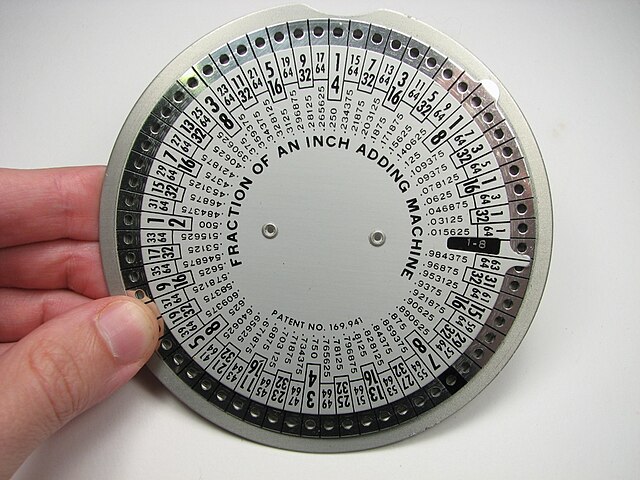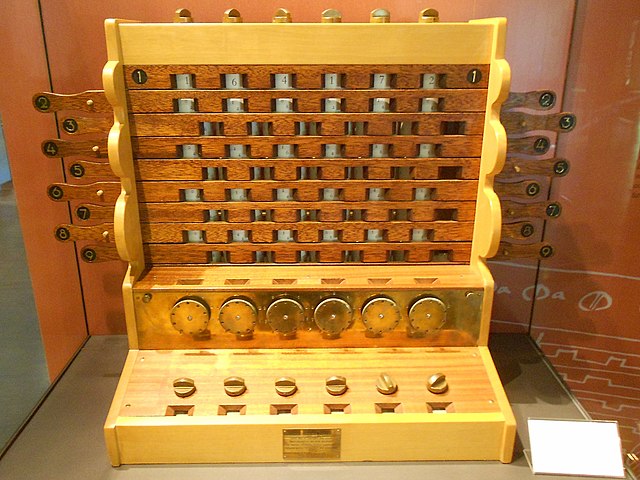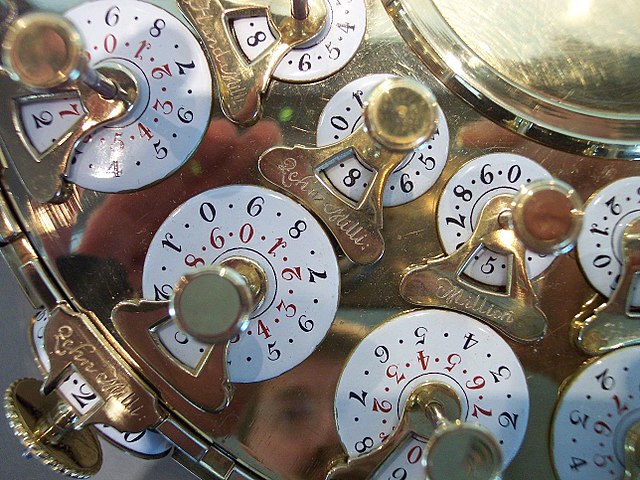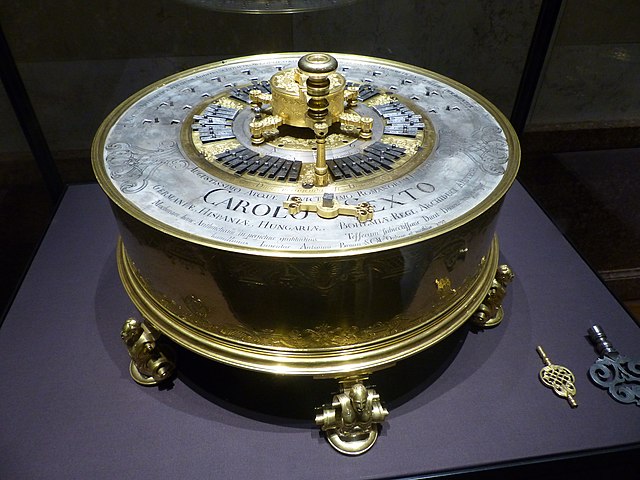An adding machine is a class of mechanical calculator, usually specialized for bookkeeping calculations.
In the United States, the earliest adding machines were usually built to read in dollars and cents. Adding machines were ubiquitous office equipment until they were phased out in favor of calculators in the 1970s and by personal computers beginning in about 1985. The older adding machines were rarely seen in American office settings by the year 2000.
A Resulta - BS 7 adding machine
An older adding machine. Its mechanism is similar to a car odometer.
Adding machine for the Australian pound c.1910, note the complement numbering, and the columns set up for shillings and pence.
A manual adding machine manufactured in the 1950s.
A mechanical calculator, or calculating machine, is a mechanical device used to perform the basic operations of arithmetic automatically, or (historically) a simulation such as an analog computer or a slide rule. Most mechanical calculators were comparable in size to small desktop computers and have been rendered obsolete by the advent of the electronic calculator and the digital computer.
Four of Pascal's calculators and one machine built by Lépine in 1725, Musée des Arts et Métiers
Replica of Schickard´s calculator
Detail of a replica of an 18th-century calculating machine, designed and built by German Johann-Helfrich Müller.
A mechanical calculator from Anton Braun, dated 1727








